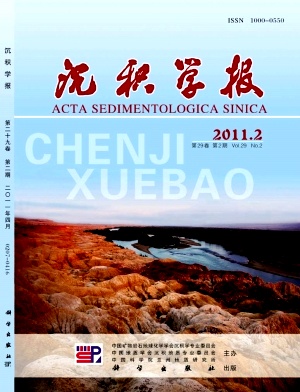Fabric Analysis of Yijun Gravels of Lower Cretaceous in the Southwestern Ordos Basin
- Received Date: 1900-01-01
- Rev Recd Date: 1900-01-01
- Publish Date: 2011-04-10
-
Key words:
- Ordos Basin /
- Early Cretaceous /
- Yijun conglomerate /
- fabric analysis of gravel /
- Weibei uplift /
- original basin boundary
Abstract: The study area is located in the southwest of the Ordos Basin, with the tectonic position in the intersection of Ordos Basin and QinlingQilian orogenic belt, and the area is adjacent to the western thrust fold belt in the west, and looking at Qinling orogenic belt across Weihe graben in the south. Since the Late Triassic, molasse formations were widely developed because of the neighbouring orogenic belts' multistage tectonic movements. Among them the Yijun conglomerate at the bottom of the Lower Cretaceous is the typical molasse formation. The study on it has great significance and value to discuss the original basin boundary and basinmountain evolution in the southwest of the Early Cretaceous basin.
Using fabric analysis method to study the composition, particle size, shape and preferred orientations of nine measuring points from west to east in Yijun conglomerate in the southern Early Cretaceous basin can clarify the composition, source and formation environment of these gravels. The composition analysis shows that the component gravels from the west to the east in the study area can be divided into three regions: Longxian Qianyang area's gravels are mainly carbonate rocks, LinyouYongping area's gravels are dominated by granite and metamorphic rocks, Binxian area's gravels are quartzite and metamorphic rocks. Analysis on particle size, shape and preferred orientations indicate that the gravels size show largesmalllargesmall rule from west to east, generally with poor sorting, subangular to subrounded and low degree weathering, and the material mainly come from the southern of the basin, which can be seen that the Yijun conglomerate is an alluvial fanfluvial sedimentary gravels with arid environment and rapid accumulation to deposit in the depression at the foot of mountain.
Combining with analysis of adjacent areas rock formations and regional geology, we consider that the provenance of Lower Cretaceous should not come from the old strata of southern Weibei uplift or the preCenozoic strata of Weihe garben. LinyouBinxian region's gravels mainly came from the North Qinling orogenic belt, and LongxianQianyang's gravels might come from the Paleozoic of Longshan area, which was the extrusion response of Qinling orogenic belt at southwestern basin in Late Mesozoic. It can be further explained by the evidence that the largescale uplift does not exist at Weibei area or it's southern to prevent the source material from Qinling orogenic belt. We can infer that the development time of Weibei largescale uplift may be in the late Early Cretaceous at least.
While the sedimentary facies of the southern basin in Lower Cretaceous are fluvial, delta and lake, therefore, it is considered that the southern boundary of the heyday sedimentary basin in the Cretaceous may be still extended to the south, which may be at least in Weihe region or even in the northern foot of Qinling mountain.
| Citation: | WANG Jianqiang. Fabric Analysis of Yijun Gravels of Lower Cretaceous in the Southwestern Ordos Basin[J]. Acta Sedimentologica Sinica, 2011, 29(2): 226-234. |






 DownLoad:
DownLoad: